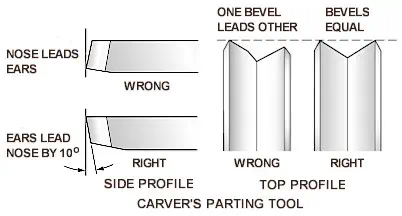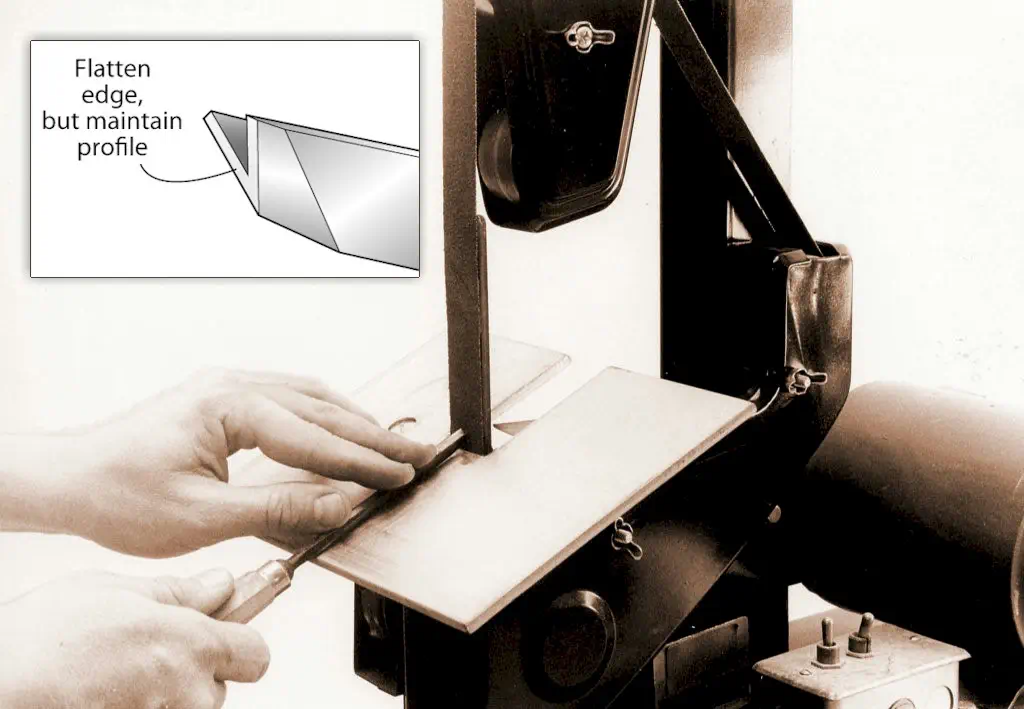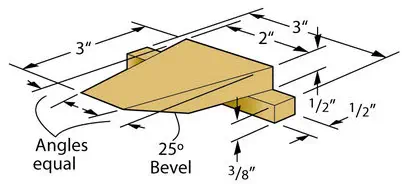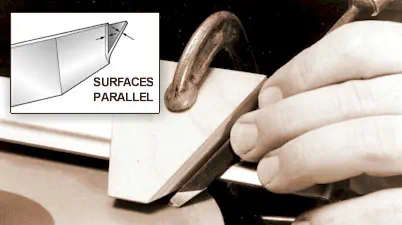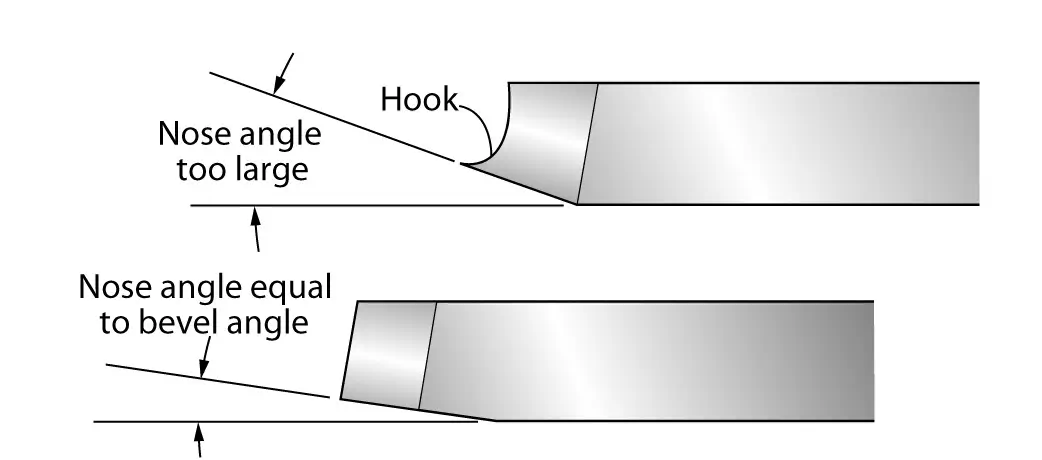To sharpen a parting tool or V-gouge, first check the profile. As they come from the manufacturer, many parting tools are ground with the nose slightly ahead of the ears. Because of this, the nose cuts the wood and begins to lift the chip before the ears have a chance to cut the sides of the groove. It makes more sense to let the ears lead the nose so the tool cuts the sides of the groove first, then cleans out the bottom.
When grinding the bevels, treat the tool as if it were two skew chisels joined at the sides. Each bevel must be ground to precisely the same angle, and you must remove the same amount of stock from both. After grinding the bevels, grind the nose (the point of the V) to the same angle as the bevels. This removes the small protruding hook that forms there.


